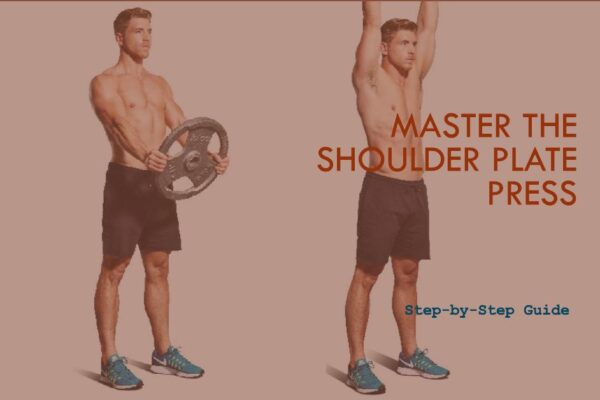The debate between the converging chest press and the traditional bench press has sparked interest in the fitness community. These exercises differ in their range of motion and muscle engagement, leading to discussions about their effectiveness in building chest strength and muscle development. Understanding the unique characteristics and potential benefits of each exercise can help individuals make informed decisions based on their fitness goals.
Is Converging Chest Press Better Than Bench Press?
No, the converging chest press is not inherently better than the bench press. While both exercises have their unique advantages, the bench press is often favored for its ability to engage a wide range of muscles and promote overall upper-body strength. The bench press specifically targets the chest, shoulders, and triceps, making it a fundamental exercise for building upper body power and muscle mass.

Is Converging Chest Press The Same As Bench Press?
No, the converging chest press and the bench press are not the same. The converging chest press is performed on a machine with independently moving handles, while the bench press involves pressing a weight, such as a barbell while lying horizontally on a weight training bench. These exercises differ in terms of equipment used, movement pattern, and muscle activation.
Comparison B/W Converging Chest Press vs Bench Press
| Aspect | Converging Chest Press | Bench Press |
|---|---|---|
| Range of Motion | Offers a more adaptable range of motion due to independently moving handles, potentially reducing strain on the joints. | Utilizes a fixed path of motion with the barbell, which may limit adaptability but allows for traditional strength development. |
| Muscle Engagement | Emphasizes chest muscle activation by allowing a more natural movement pattern, potentially leading to increased chest muscle recruitment. | Engages a wide range of muscles, including chest, shoulders, and triceps, promoting overall upper body strength. |
| Stabilizing Muscles | Requires less involvement of stabilizing muscles due to the guided movement, potentially reducing the need for balance and stability. | Engages stabilizing muscles for balance and stability, contributing to overall functional strength and coordination. |
| Strength Building | Focuses on isolated chest muscle engagement, making it potentially beneficial for targeted strength development in the chest area. | Promotes overall upper body strength and power by engaging multiple muscle groups, contributing to comprehensive strength development. |
| Equipment Accessibility | Often available as a machine in gym settings, providing a controlled and user-friendly option for individuals at various fitness levels. | Requires access to a bench, barbell, and weights, potentially posing challenges for beginners or those with limited equipment availability. |
This comparison highlights the unique characteristics and potential benefits of both the converging chest press and the bench press, offering insights into their range of motion, muscle engagement, and suitability for strength building.
Muscles Targeted By Converging Chest Press vs Bench Press
Here are the muscles targeted by the converging chest press and the bench press:
Converging Chest Press:
- Primary focus on the pectoral (chest) muscles.
- Engages the anterior deltoids (front shoulder muscles).
- Involvement of the triceps as secondary muscles.
- Emphasis on chest muscle activation due to the converging motion of the handles.
Bench Press:
- Targets the pectoral (chest) muscles as the primary muscle group.
- Engages the anterior deltoids (front shoulder muscles).
- Involvement of the triceps as secondary muscles.
- Engages the serratus anterior, a muscle that stabilizes the shoulder blades during the movement.
- Requires stabilization from the core muscles.
These exercises target similar muscle groups, with the converging chest press potentially emphasizing chest muscle activation due to its unique movement pattern.
Converging Chest Press
The converging chest press is a strength training exercise performed using a machine with independently moving handles. It involves pushing the handles forward, causing them to converge towards the midline of the body, simulating a hugging motion. This exercise primarily targets the chest muscles and emphasizes chest muscle activation. The guided movement of the machine may require less involvement in stabilizing muscles, making it a user-friendly option for individuals at various fitness levels.

How to Perform Converging Chest Press?
A. Set up and Equipment Needed:
- Adjust the seat and backrest of the converging chest press machine to a comfortable position.
- Select an appropriate weight for the exercise by adjusting the resistance on the machine.
B. Initial Position:
- Sit on the machine’s seat with your back flat against the backrest.
- Grip the handles at chest level, ensuring a comfortable and secure hold.
C. Execution of the Exercise:
- Push the handles forward, allowing them to converge towards the midline of your body.
- Extend your arms fully without locking your elbows, feeling a contraction in your chest muscles.
- Slowly return the handles to the starting position, maintaining control throughout the movement.
D. Breathing Tips:
- Inhale as you lower the handles to the starting position.
- Exhale as you push the handles forward and converge them, engaging your chest muscles.
Following these steps will help ensure proper form and technique when performing the converging chest press exercise.
Benefits of Converging Chest Press
- Targets the pectoral (chest) muscles while engaging the biceps, deltoids, and latissimus dorsi.
- Facilitates a more adaptable range of motion, potentially leading to increased chest muscle recruitment.
- Emphasizes chest muscle activation due to the converging motion of the handles.
- May require less involvement in stabilizing muscles, providing a user-friendly option for individuals at various fitness levels.
- Provides a controlled and guided movement, potentially reducing strain on the joints.
Common Mistakes to Avoid
Here are some common mistakes to avoid in the converging chest press:
- Incorrect Hand Placement: Placing hands too wide or too narrow on the handles can lead to improper muscle engagement and potential strain.
- Overarching the Back: Excessive arching of the back during the pressing motion can result in unnecessary stress on the lower back and may compromise form.
- Using Excessive Weight: Using a weight that is too heavy can lead to compromised form and reduced effectiveness of the exercise while increasing the risk of injury.
- Lack of Control: Failing to maintain control throughout the movement, especially during the eccentric (lowering) phase, can diminish the benefits of the exercise and increase the risk of injury.
- Neglecting Shoulder Blade Retraction: Not retracting the shoulder blades before initiating the press can limit chest activation and lead to over-reliance on the shoulders.
- Incomplete Range of Motion: Failing to perform the exercise through a full range of motion can limit muscle engagement and overall effectiveness.
By being mindful of these common mistakes, individuals can optimize their form and maximize the benefits of the converging chest press.
Bench Press
The bench press is a weight training exercise that involves pressing a weight, typically a barbell, upwards while lying horizontally on a weight training bench. It is renowned for its effectiveness in building various upper body muscles, including the chest, arms, and shoulders. This exercise can be performed with either a barbell or dumbbell, and proper form and technique are crucial for maximizing its benefits and minimizing the risk of injury.

How to Perform Bench Press?
A. Set up and Equipment Needed:
- Lie down on a flat bench with the barbell set at chest height.
- Ensure proper grip and foot placement for stability.
B. Initial Position:
- Arch your back slightly, retract your shoulder blades, and engage your core muscles.
- Keep your feet firmly planted on the ground.
C. Execution of the Exercise:
- Lower the barbell to your chest while maintaining control and stability.
- Press the barbell back up to the starting position, fully extending your arms.
D. Breathing Tips:
- Inhale as you lower the barbell towards your chest.
- Exhale as you push the barbell back up.
Remember, proper form, breathing techniques, and muscle engagement are crucial for a successful bench press routine.
Benefits of Bench Press
- Increased Upper Body Strength: The bench press is effective in strengthening the chest, shoulders, and arms, leading to improved upper body strength.
- Improved Muscular Endurance: Incorporating bench presses into a weight-training regimen can enhance muscular endurance, which is beneficial for various physical activities.
- Triceps Development: The exercise helps build and strengthen the lateral and medial heads of the triceps across different ranges of motion.
- Enhanced Muscle Mass: Bench pressing can contribute to increased muscle mass in the chest, shoulders, and arms, aiding in overall muscle development.
- Cardio Endurance: It is noted as an effective exercise to help build cardio endurance, contributing to improved overall fitness levels.
- Bone Density: Some research suggests that the bench press may aid in increasing bone density, and promoting bone health.
- Compound Exercise: The bench press engages multiple muscle groups simultaneously, making it a major compound exercise that offers comprehensive strength and size gains.
These benefits make the bench press a versatile and impactful exercise for overall upper body strength and fitness.
Common Mistakes to Avoid in Bench Press
Here are some common mistakes to avoid in the bench press, based on the information gathered:
- Elbows Too High: Allowing the elbows to excessively flare out during the press can lead to shoulder strain and reduced chest engagement.
- Bouncing the Bar: Bouncing the bar off the chest can diminish the effectiveness of the exercise, potentially leading to injury and decreased muscle activation.
- Improper Grip Width: Incorrect grip width may limit the activation of the chest muscles and increase the risk of shoulder discomfort.
- Not Getting a Liftoff: Failing to receive a proper liftoff when using heavy weights may compromise form and stability during the initial phase of the lift.
- Not Pausing Before Descent: Neglecting a brief pause at the top of the movement before lowering the bar can reduce the time under tension and limit muscle activation.
- Not Using Proper Breathing Technique: Improper breathing or holding the breath throughout the movement can impact stability and performance.
- Flaring Elbows Out at 90° Angles: Excessive elbow flare can stress the shoulder joint and decrease the involvement of the chest muscles.
- Bending Wrists Backwards: Incorrect wrist positioning can lead to discomfort and reduce the overall effectiveness of the exercise.
By being aware of these common mistakes, individuals can optimize their bench press form and minimize the risk of injury.
Frequent Question Answers
| Question | Answer |
|---|---|
| Is the Converging chest press the same as the bench press? | No, the converging chest press is not the same as the bench press. |
| Which is better chest press or bench press? | The preference for either exercise depends on individual fitness goals and specific muscle targeting. |
| Is it better to arch bench press or bench press? | Arching during the bench press can reduce stress on the shoulder joint, but proper form is essential. |
| What is the most effective chest press? | The effectiveness of a chest press depends on individual goals and preferences. |
| Is Converging chest press good? | The converging chest press offers benefits such as guided movement and potential chest muscle activation. |
| What is a good converging chest press weight? | The appropriate weight for a converging chest press depends on an individual’s strength and fitness level. |
| Which chest press is the hardest? | The difficulty of a chest press can vary based on the individual’s strength and the specific equipment used. |
| Is it OK to do chest press every day? | It’s generally not recommended to perform chest presses, especially with heavy weight, every day to allow for adequate muscle recovery. |
| Is chest press better than wide chest press? | The suitability of a chest press variation depends on individual preferences and specific muscle targeting. |
Conclusion
In conclusion, the preference for either exercise depends on individual fitness goals, experience levels, and specific muscle targeting. The converging chest press may be advantageous for its guided movement and potential chest muscle activation, while the bench press is favored for comprehensive upper body strength and muscle mass development.






Leave a Reply